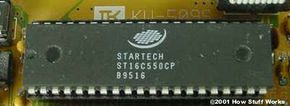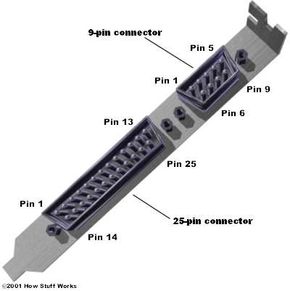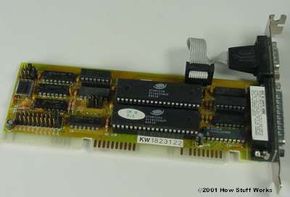All computer operating systems in use today support serial ports, because serial ports have been around for decades. Parallel ports are a more recent invention and are much faster than serial ports. USB ports are only a few years old, and will likely replace both serial and parallel ports completely over the next several years.
The name "serial" comes from the fact that a serial port "serializes" data. That is, it takes a byte of data and transmits the 8 bits in the byte one at a time. The advantage is that a serial port needs only one wire to transmit the 8 bits (while a parallel port needs 8). The disadvantage is that it takes 8 times longer to transmit the data than it would if there were 8 wires. Serial ports lower cable costs and make cables smaller.
Before each byte of data, a serial port sends a start bit, which is a single bit with a value of 0. After each byte of data, it sends a stop bit to signal that the byte is complete. It may also send a parity bit.
Serial ports, also called communication (COM) ports, are bi-directional. Bi-directional communication allows each device to receive data as well as transmit it. Serial devices use different pins to receive and transmit data -- using the same pins would limit communication to half-duplex, meaning that information could only travel in one direction at a time. Using different pins allows for full-duplex communication, in which information can travel in both directions at once.
Serial ports rely on a special controller chip, the Universal Asynchronous Receiver/Transmitter (UART), to function properly. The UART chip takes the parallel output of the computer's system bus and transforms it into serial form for transmission through the serial port. In order to function faster, most UART chips have a built-in buffer of anywhere from 16 to 64 kilobytes. This buffer allows the chip to cache data coming in from the system bus while it is processing data going out to the serial port. While most standard serial ports have a maximum transfer rate of 115 Kbps (kilobits per second), high speed serial ports, such as Enhanced Serial Port (ESP) and Super Enhanced Serial Port (Super ESP), can reach data transfer rates of 460 Kbps.



